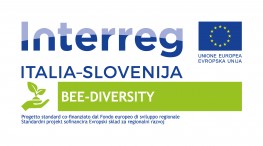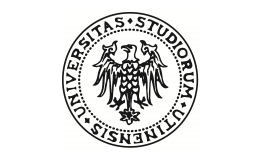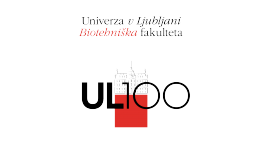Preserving and protecting the environment and promoting resource efficiency.

Protecting and promoting natural and cultural resources
Bee-diversity has created an innovative cross-border system for the improvement and monitoring of biodiversity in the co-financed habitats which has enabled the sustainable and integrated management of ecosystems. This system was structured in protocols and in a joint model transferable in Europe. For the first time the project integrates monitoring of the state of health of areas through pollinators with a process of harvesting sowing and spreading native herbaceous plants.
Bee-diversity has created an innovative cross-border system for the improvement and monitoring of biodiversity in the co-financed habitats which has allowed for the improvement and sustainable and integrated management of ecosystems. This system was implemented in 10 case studies for a total of 8000 hectares spread between Italy and Slovenia structuring protocols and a joint model that can be transferred to Europe even after the formal conclusion of the project. Bee-diversity has integrated for the first time the monitoring of the state of health of areas with pollinators (Bees) through an innovative ICT system and an APP for the collection management and aggregation of data with a process of collection sowing and diffusion of native herbaceous plants. The work was carried out in Natura 2000 areas with the direct collaboration of the owners and management companies and stakeholders (farmers, beekeepers, technicians, etc.). Through the APP the project communicates in different ways technical information to professionals and general information to raise awareness among the population. In addition Bee-diversity has planned training and awareness-raising actions for companies stakeholders and technicians in order to disseminate and train in the application of the protocols created.
The main result of the project consisted in realizing protocols and a system for the innovative management and improvement of biodiversity. The development of a model developed for integrated ecosystem management to enable beekeepers farmers and stakeholders to develop environmentally and economically sustainable methods. This system was implemented in 10 case studies for a total of 8000 hectares spread between Italy and Slovenia structuring protocols and a joint model that can be transferred to Europe even after the formal conclusion of the project. Bee-diversity has promoted an innovative system for connecting hives using ICT software to promote monitoring of environmental quality and biodiversity through bees which play a fundamental role in the conservation of the so-called spontaneous flora through an innovative ICT system and an APP for the collection management and aggregation of data with a process of collection sowing and dissemination of native herbaceous plants. Furthermore BEE-DIVERSITY has worked in Natura 2000 areas with the direct collaboration of the owners and management companies and stakeholders (farmers, beekeepers, technicians, etc.) and through the APP the project has communicated in different ways technical information to insiders and general information to sensitize the population. Ultimately the project has favored the restoration of local plant biodiversity and its correct management ensuring better protection of ecosystem services located in areas with naturalistic-environmental value.
Lead Partner

Project partner 1

Project partner 2

Project partner 3

Project partner 4

| BEE-DIVERSITY_Poster_A3.pdf ( 1 byte, published on 17 May, 2021 - 12:09 ) | |
| BEE-DIVERSITY_Rollup.pdf ( 1 byte, published on 17 May, 2021 - 12:09 ) | |
| 01 Interreg_BEEDIVERSITY_newsletter ENG.pdf ( 384 bytes, published on 17 May, 2021 - 12:09 ) | |
| 02 Interreg_BEEDIVERSITY_newsletter ENG.pdf ( 2 bytes, published on 8 September, 2022 - 10:51 ) | |
| 03 Interreg_BEEDIVERSITY_newsletter ENG.pdf ( 3 bytes, published on 11 October, 2022 - 11:02 ) | |
| 04 Interreg_BEEDIVERSITY_newsletter ENG.pdf ( 3 bytes, published on 11 October, 2022 - 11:02 ) | |
| Depliant_10x21.pdf ( 926 bytes, published on 11 October, 2022 - 11:02 ) | |
| Handbook Best Practices.pdf ( 2 bytes, published on 11 October, 2022 - 11:02 ) | |
| Layman report.pdf ( 2 bytes, published on 11 October, 2022 - 11:02 ) | |
| Leaflet_A4.pdf ( 4 bytes, published on 11 October, 2022 - 11:02 ) | |
| BEE-DIVERSITY_WP3.1_Az6_CreazioneNetwork.pdf ( 11 bytes, published on 28 June, 2024 - 10:44 ) | |
| BEE-DIVERSITY_WP3.1_Az7_PianoAzione.pdf ( 7 bytes, published on 28 June, 2024 - 10:44 ) | |
| BEE-DIVERSITY_WP3.1_Az8_ModelloGestione.pdf ( 4 bytes, published on 28 June, 2024 - 10:44 ) | |
| BEE-DIVERSITY_WP3.1_Az9_Diffusione&Formazione.pdf ( 1 byte, published on 28 June, 2024 - 10:44 ) | |
| BEE-DIVERSITY_WP3.2_Az13_ScambioBuonePratiche.pdf ( 2 bytes, published on 28 June, 2024 - 10:44 ) | |
| BEE-DVERSITY_WP3.2_ATT10_sistemaICT.pdf ( 1 byte, published on 28 June, 2024 - 10:44 ) | |
| BEE-DVERSITY_WP3.2_ATT11_sviluppoAPP.pdf ( 2 bytes, published on 28 June, 2024 - 10:45 ) | |
| BEE-DVERSITY_WP3.2_ATT12_TEST.pdf ( 10 bytes, published on 28 June, 2024 - 10:45 ) | |
| BEE-DIVERSITY_WP3.3_Az14_Posizionamento_arnie.pdf ( 1 byte, published on 28 June, 2024 - 10:45 ) | |
| BEE-DIVERSITY_WP3.3_Az15_AzioniPilota.pdf ( 737 bytes, published on 28 June, 2024 - 10:45 ) | |
| BEE-DIVERSITY_WP3.3_Az16_Raccomandazioni_DecPol.pdf ( 817 bytes, published on 28 June, 2024 - 10:45 ) | |
| BEE-DIVERSITY_WP3.3_Az17_Coinvolgimento_sogg.pdf ( 870 bytes, published on 28 June, 2024 - 10:45 ) |
KEY PROJECT OBJECTIVES
BEE-DIVERSITY aimed to create an innovative cross-border system for the improvement and monitoring of biodiversity in habitats that integrated, for the first time, the monitoring of the health status of the areas through pollinators and agricultural management protocols. The main outcome was the development of a model for integrated ecosystem management to enable beekeepers, farmers and stakeholders to develop environmentally and economically sustainable cultivation methods. BEE-DIVERSITY has also created an innovative system for connecting hives using software for monitoring environmental quality and biodiversity through bees, for the collection, management and aggregation of data. The hives were positioned in 15 study areas covering 12,000 hectares distributed between Italy and Slovenia. Furthermore, BEE-DIVERSITY operated in close collaboration with stakeholders (farmers, beekeepers, technicians, etc.) and, through the APP, communicated technical information to professionals and general information to raise awareness among the population. Ultimately, the project promoted the restoration of local plant biodiversity and its correct management, ensuring better protection of ecosystem services located in areas of the Natura 2000 network.
A web-app has been developed for the remote management of electronic hives and for sharing useful data for management purposes. The web app allows not only to interact with the data of the electronic hives remotely (internal and external temperature, weight, number of flights), but also to integrate them with stationary data (agricultural work, present blooms, etc.) and state of health and management of the apiary (health treatments, state of the colony).
Precise analyzes were carried out on the honey and pollen matrices to assess the state of health of the environment. In detail, palynological analysis was carried out to determine the botanical species foraged and pesticide and heavy metal residues were searched for.
Good agricultural management practices have been implemented aimed at maintaining biodiversity, providing indications that allow coexistence between agricultural practices, the survival of pollinating insects and the conservation of the biodiversity of the agroecosystem.
Technical-informative seminars were organized aimed at stakeholders on the issues of biodiversity linked to beekeeping and the innovative management of bees and ecosystems, which made it possible to reach a large number of people and stimulate discussion (see the "documents" section ” for recordings). The results of the project were also presented during the seminars.
Scientific and informative technical documents were produced, in particular the Layman Report condenses the main outputs of the project. The documents can be downloaded in the "Documents" section of this site.
This is the structure in which the project was divided:
BEEDIVERSITY - WP and DELIVERABLE PER ACTIVITY
The project was developed through 3 sections of actions (Work Packages -WP), and a communication section. The project activities as envisaged by the individual action groups (WP) are listed below:
WP2 - COMMUNICATION ACTIVITIES
These are communication activities (Com) with the creation and management of social accounts (https://x.com/beediversity / https://www.facebook.com/interregbeediversity/), web and the promotion of the project and related activities and events, the creation and management of technical and informative events:
Com 6 - Social media accounts
Com 2 - Advertising campaign
Com 5 - Website
Com 1 – Events
WP3.1 - Mapping and creation of the integrated management model
Activities (ATT) aimed at the creation of an integrated management system, which combines respect for ecosystems and the maintenance of biodiversity with agricultural practices and the management of agroecosystems. The actions included an initial phase of data collection and study, aimed at developing management strategies.
ATT6 - Creation of the network and preliminary study on existing practices for the conservation of biodiversity
ATT7 - Action plan for stable grasslands
ATT8 - Development of an integrated ecosystem management model
ATT9 - Good practices: dissemination and training on the importance of biodiversity for professionals
WP3.2 - Development of innovations for biodiversity
These are the most innovative activities of the project, which involve the use of an automated system for monitoring hive parameters integrated into a web app for their remote viewing and management. Electronic hives were installed and the interface with the APP was managed, operation tests were carried out and a hive-app management model was generated that could be functional for use with different devices for management not only by beekeepers, but also by entities responsible for managing the environment
ATT10 - Development of an innovative ICT system
ATT11 - Development of an APP for the collection and management of data and for its dissemination to stakeholders
ATT12 - Testing and fine-tuning of the management model for the economic and environmental sustainability of good practices for the conservation and promotion of biodiversity
ATT13 - Exchange and dissemination of good practices on improving biodiversity through bees
WP3.3 - Sustainable pilot actions for biodiversity
The activities carried out in the field and involving stakeholders are the connection point between the previous two packages of activities.
ATT14 - Positioning of hives for bee monitoring
ATT15 - Pilot actions for the conservation and improvement of biodiversity through pollinators
ATT16 - Definition of recommendations for policy-makers
ATT17 - Involvement of public entities and managers in the use of the management model and protocol for biodiversity.
Natura 2000 network, agro-zootechnical systems and biodiversity: 12 webinars on biodiversity and good practices in apiculture and agriculture
Watch the videos produced for individual events in Italian with subtitles in Slovenian and English
Watch the videos of the final event of the BEE DIVERSITY project with the aim of improving biodiversity through the innovative management of ecosystems and bee monitoring held at the “ValleVecchia” demonstration farm – Observatory Room and Visitor Center – loc.Brussa – Caorle (VE) Italy.
ITALIAN / SLOVENIAN
WATCH THE VIDEO SUMMARY OF THE DAY